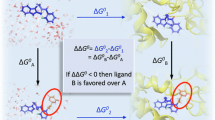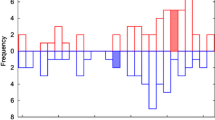Abstract
Structural information of Fc-Fc receptor interaction may contribute to the design of drugs or therapeutic antibodies associated with the interaction. Computational protein-protein docking can be employed in structural study of protein-protein interaction, but its efficiency and reliability are still unstable and need to be validated and optimized for respective target protein complexes. In this study, we investigated and assessed the computational modeling efficiency of Fc-FcγR complex through HADDOCK by defining five different sets of active residues, a major parameter to determine the prediction efficiency of HADDOCK. The binding residues identified experimentally or the residues in the binding pocket were confirmed to be efficient active residues to achieve a high prediction efficiency, and too narrower or wider specification of active residues led to poor prediction efficiency. Most binding residues and crucial molecular interactions such as conserved interactions and hydrogen bonds in the crystal structure were reproduced in the best model. The HADDOCK docking condition determined in this study is expected to be applied to the computational characterization of various Fc-Fc receptor complexes and mutants.
Similar content being viewed by others
References
Schroeder, H. W. Jr. and L. Cavacini (2010) Structure and function of immunoglobulins. J. Allergy Clin. Immunol. 125: S41–S52.
Raghavan, M. and P. J. Bjorkman (1996) Fc receptors and their interactions with immunoglobulins. Annu. Rev. Cell Dev. Biol. 12: 181–220.
Jung, S. T., W. Kelton, T. H. Kang, D. T. W. Ng, J. T. Andersen, I. Sandlie, C. A. Sarkar, and G. Georgiou (2013) Effective phagocytosis of low Her2 tumor cell lines with engineered, aglycosylated IgG displaying high FcgammaRIIa affinity and selectivity. ACS Chem. Biol. 8: 368–375.
Nimmerjahn, F. and J. V. Ravetch (2010) Antibody-mediated modulation of immune responses. Immunol. Rev. 236: 265–275.
Jiang, X. R., A. Song, S. Bergelson, T. Arroll, B. Parekh, K. May, S. Chung, R. Strouse, A. Mire-Sluis, and M. Schenerman (2011) Advances in the assessment and control of the effector functions of therapeutic antibodies. Nat. Rev. Drug Discov. 10: 101–111.
Jo, M., H. S. Kwon, K. H. Lee, J. C. Lee, and S. T. Jung (2018) Engineered aglycosylated full-length IgG Fc variants exhibiting improved FcgammaRIIIa binding and tumor cell clearance. MAbs. 10: 278–289.
Sondermann, P., R. Huber, V. Oosthuizen, and U. Jacob (2000) The 3.2-A crystal structure of the human IgG1 Fc fragment-Fc gammaRIII complex. Nature. 406: 267–273.
Smith, G. R. and M. J. E. Sternberg (2002) Prediction of proteinprotein interactions by docking methods. Curr. Opin. Struct. Biol. 12: 28–35.
Weng, Z., K. Gulukota, D. E. Vaughn, P. J. Bjorkman, and C. DeLisi (1998) Computational determination of the structure of rat Fc bound to the neonatal Fc receptor. J. Mol. Biol. 282: 217–225.
Vakser, I. A. (2014) Protein-protein docking: from interaction to interactome. Biophys. J. 107: 1785–1793.
van Zundert, G. C. P., J. P. G. L. M. Rodrigues, M. Trellet, C. Schmitz, P. L. Kastritis, E. Karaca, A. S. J. Melquiond, M. van Dijk, S. J. de Vries, and A. M. J. J. Bonvin (2016) The HADDOCK2.2 Web sderver: User-friendly integrative modeling of biomolecular complexes. J. Mol. Biol. 428: 720–725.
Dominguez, C., R. Boelens, and A. M. J. J. Bonvin (2003) HADDOCK: a protein-protein docking approach based on biochemical or biophysical information. J. Am. Chem. Soc. 125: 1731–1737.
The PyMOL Molecular Graphics System, Version 1.8 Schrödinger, LLC.
Wallace, A. C., R. A. Laskowski, and J. M. Thornton (1995) LIGPLOT: a program to generate schematic diagrams of protein-ligand interactions. Protein Eng. 8: 127–134.
Laskowski, R. A. and M. B. Swindells (2011) LigPlot+: multiple ligand-protein interaction diagrams for drug discovery. J. Chem. Inf. Model. 51: 2778–2786.
Humphrey, W., A. Dalke, and K. Schulten (1996) VMD: visual molecular dynamics. J. Mol. Graph. 14: 33–38.
Acknowledgments
This research was supported by the National Research Foundation of Korea (NRF) grant funded by the Korea Government (MSIT) (No. 2018R1A2B6001670). The authors declare no conflict of interest. Neither ethical approval nor informed consent was required for this study.
Author information
Authors and Affiliations
Corresponding author
Rights and permissions
About this article
Cite this article
Jebamani, P., Sokalingam, S., Sriramulu, D.K. et al. Assessment of Computational Modeling of Fc-Fc Receptor Binding Through Protein-protein Docking Tool. Biotechnol Bioproc E 25, 734–741 (2020). https://doi.org/10.1007/s12257-020-0050-5
Received:
Revised:
Accepted:
Published:
Issue Date:
DOI: https://doi.org/10.1007/s12257-020-0050-5




